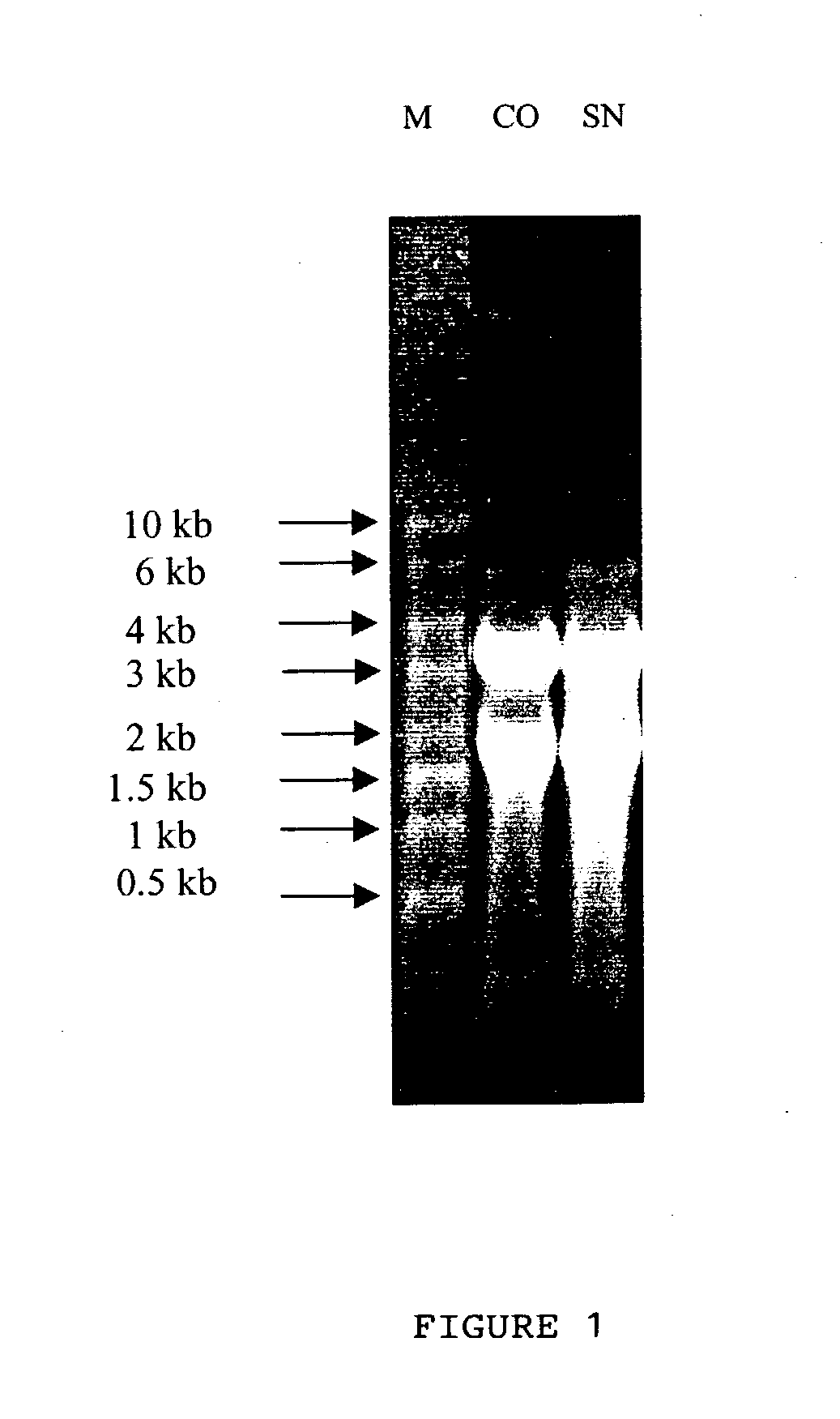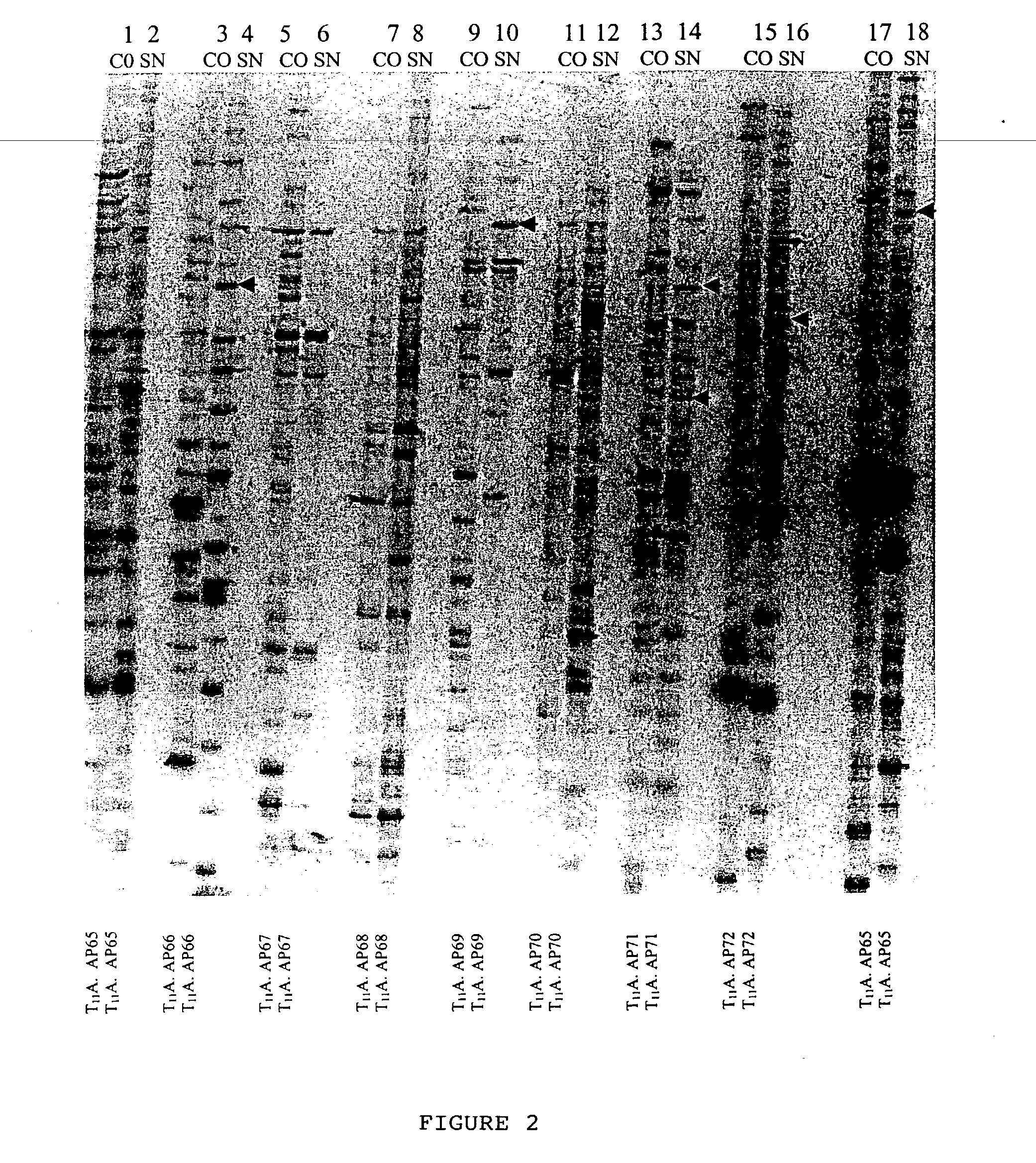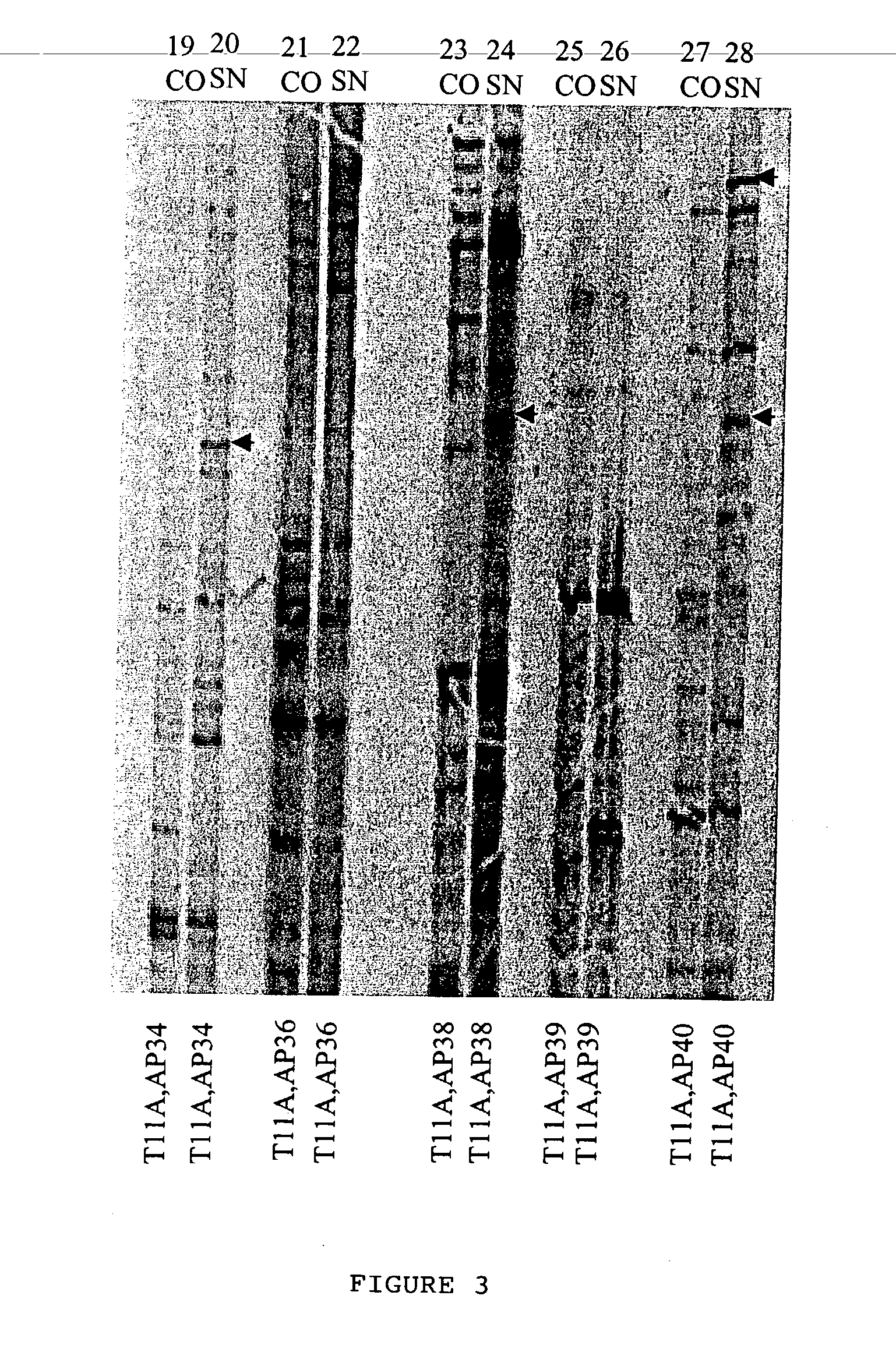Novel DNA sequences in plant Caragana jubata with freeze tolerance and a method thereof
a technology of plant caragana jubata and dna sequences, which is applied in the field of new dna sequences in plant caragana jubata with freeze tolerance, can solve the problems of unfavorable environmental protection, inability to induce freezing tolerance in plants by exposing plants to low temperature for short periods, and inability to achieve environmental protection
- Summary
- Abstract
- Description
- Claims
- Application Information
AI Technical Summary
Problems solved by technology
Method used
Image
Examples
example 2
[0087] Conversion of mRNA into Complementary DNAs (Hereinafter Referred to cDNAs) by Reverse Transcription (Hereinafter Referred to RT)
[0088] 0.2 .mu.g of DNA-free-RNA from CO and SN samples was reverse transcribed in separate reactions to yield cDNAs using an enzyme known as reverse transcriptase. The reaction was carried out using 0.2 .mu.M. of T.sub.11M primers (M in T.sub.11M could be either T.sub.11 A, T.sub.11C or T.sub.11G), 20 .mu.M of dNTPs, RNA and RT buffer [25 mM Tris-Cl (pH. 8.3). 37.6 mM KCl, 1.5 mM MgCl.sub.2 and 5 mM DTT]. In the present invention, dNTP refers to deoxy nucleoside triphosphate which comprises of deoxyadenosine triphosphate (hereinafter referred to dATP), deoxyguanosine triphosphate (hereinafter referred to dGTP), deoxycytidine triphosphate (hereinafter referred to dCTP) and deoxythymidine triphosphate (hereinafter reffered to dTTP). Three RT reactions were set per RNA sample for the corresponding T.sub.11M primer. The reactions were carried out in a t...
example 3
[0089] Generation of a Spectrum of Differentially Expressed Genes Through Differential Display Technique for Identification of Differentially Expressed Gene(s)
[0090] Different sub-classes of cDNA from CO and SN RT product as obtained in Example 2 were amplified in the presence of a radiolabelled dATP to label the amplified product through polymerase chain reaction (hereinafter known as PCR; PCR process is covered by patents owned by Hoffman-La Roche Inc.). Radioactive PCR was carried out in 20 .mu.l reaction mix containing a (1) reaction buffer [10 mM Tris-Cl (pH. 8.4). 50 mM KCl. 1.5 mM MgCl.sub.2, 0.001% gelatin], (2) 2 uM dNTPs. (3) 0.2 .mu.M T.sub.11M and (4) 0.2 .mu.M arbitrary primers (chemicals 1 to 4 were purchased from M / s. GenHunter Corporation, Nashville. USA as a part of RNAimage kit). 0.2 .mu.l .alpha.[.sup.33P] dATP (.about.2000 Ci / mmole. purchased from JONAKI Center, CCMB campus Hyderabad. India), and 1.0 units of Thermus aqueticus (hereinafter referred to Taq) DNA Po...
example 4
[0094] Re-amplification of cDNA Probes:
[0095] Cloning the differentially expressed bands required elution of the same from the denaturating polyacrylamide gel and further amplification to yield substantial quantity of DNA for the purpose of cloning. Autoradiogram (deveoped X-ray film) was oriented with the dried gel aided with radioactive ink. The identified differentially expressed band (along with the gel and the filter paper) was cut with the help of a sterile sharp razor. DNA was eluted from the gel and the filter paper by incubating them in 100 .mu.l of sterile dH.sub.2O for 10 min in an eppendorf tube, followed by boiling for 10 minutes. Paper and gel debris were pelleted by spinning at 10.000 rpm for 2 min and the supernatant containing DNA was transferred into a new tube. DNA was precipitated with 10 .mu.l of 3M sodium acetate, pH, 5.5, 5 .mu.l of glycogen (contration of stock: 10 mg / ml) and 450 .mu.l of ethanol. After an overnight incubation at -70 .degree. C., centrifugati...
PUM
| Property | Measurement | Unit |
|---|---|---|
| Fraction | aaaaa | aaaaa |
| Fraction | aaaaa | aaaaa |
| Fraction | aaaaa | aaaaa |
Abstract
Description
Claims
Application Information
 Login to View More
Login to View More - R&D
- Intellectual Property
- Life Sciences
- Materials
- Tech Scout
- Unparalleled Data Quality
- Higher Quality Content
- 60% Fewer Hallucinations
Browse by: Latest US Patents, China's latest patents, Technical Efficacy Thesaurus, Application Domain, Technology Topic, Popular Technical Reports.
© 2025 PatSnap. All rights reserved.Legal|Privacy policy|Modern Slavery Act Transparency Statement|Sitemap|About US| Contact US: help@patsnap.com



